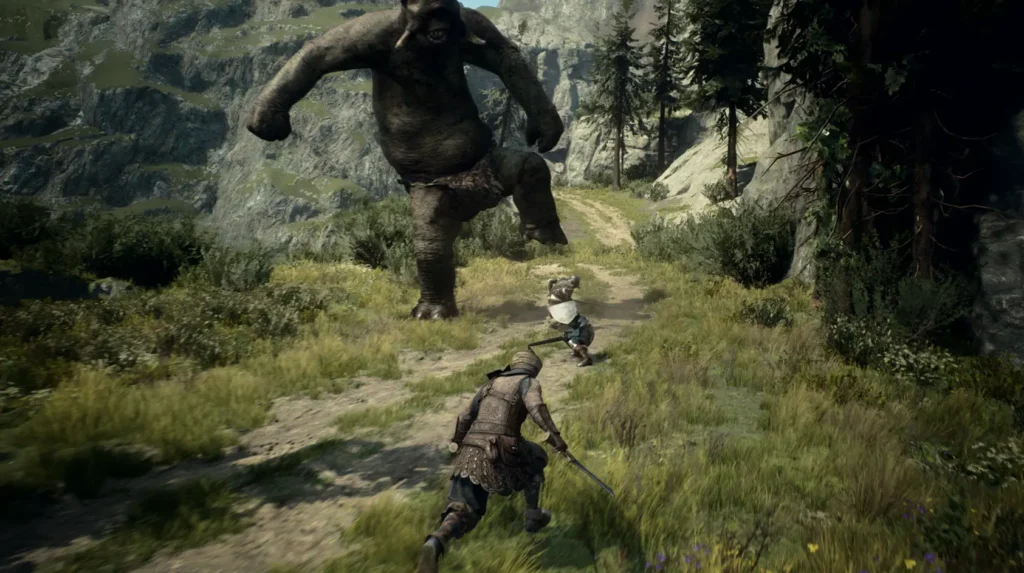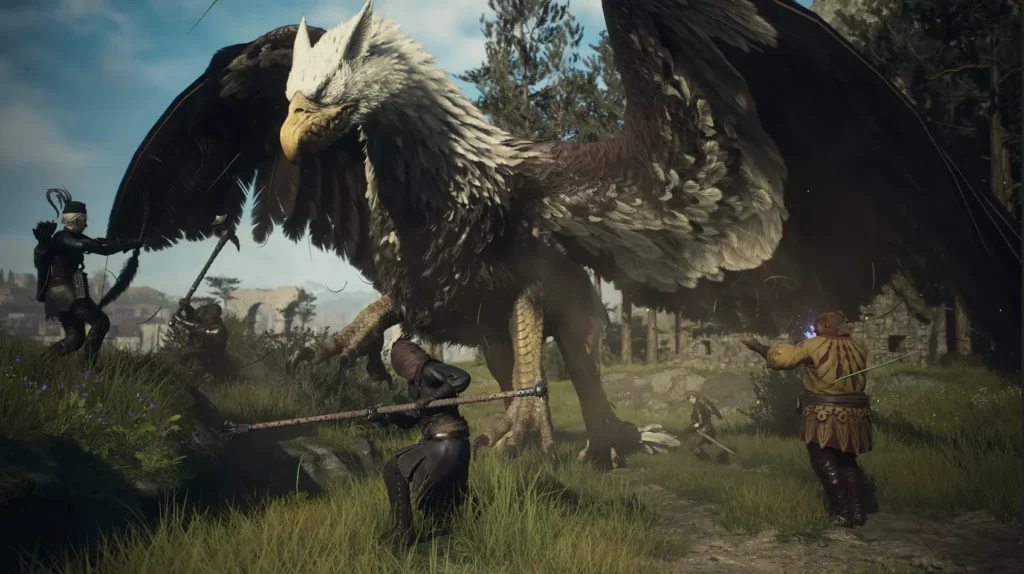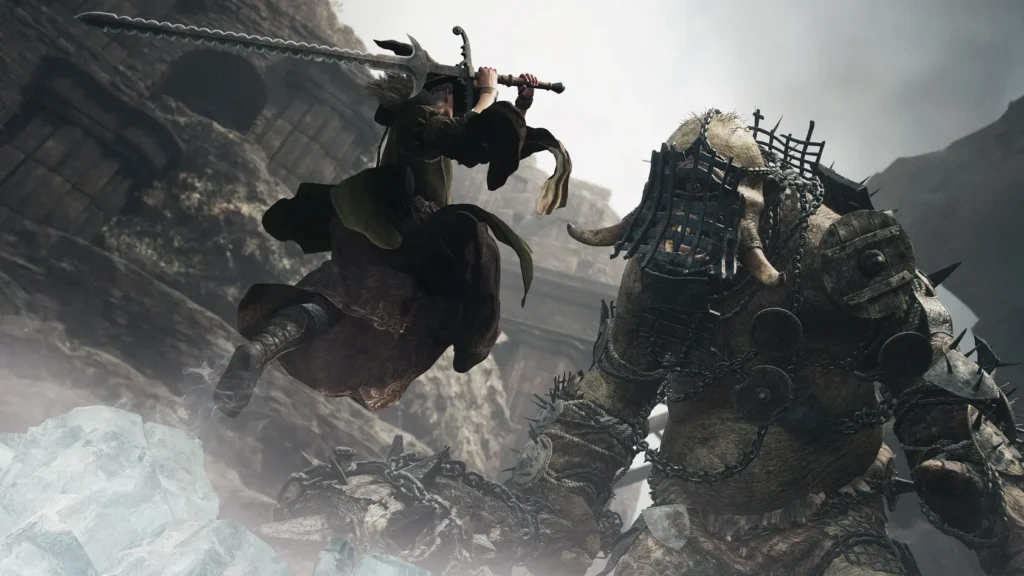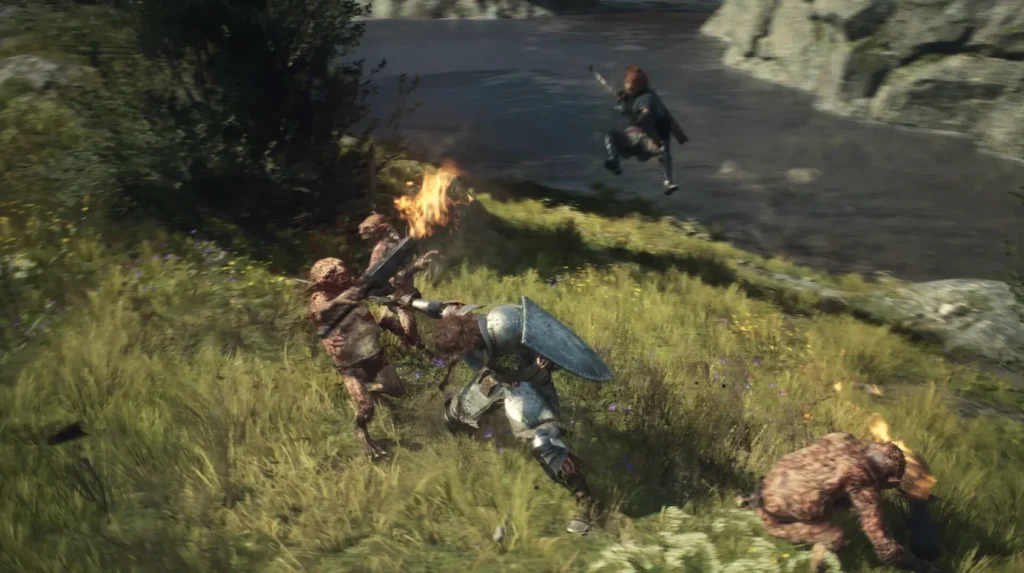Release Date : March 22, 2024
Developer(s) : Capcom
Publisher(s) : Capcom
Platforms : PS5, Xbox Series X/S, PC
12 years after its launch, one of the most underrated PS3/Xbox 360 games, Dragon’s Dogma, is returning with a new sequel: Dragon’s Dogma 2. Capcom’s title has become legendary over the years, encouraging the Japanese publisher to give the project a second chance. So, can this sequel, uphold the reputation of its predecessor and establish Dragon’s Dogma as one of the greatest RPG games in history?
First released in 2012 on PS3 and Xbox 360, the first Dragon’s Dogma was a big bet for Capcom. While the Japanese publisher is known for Street Fighter, Resident Evil, and Monster Hunter, this open-world RPG set in a convincing medieval fantasy universe made its mark among the competition. Unfortunately, it was released six months after Skyrim, to which it was unfairly compared, and failed to live up to expectations on its initial release.
However, with time, Dragon’s Dogma earned a little reputation through a series of ports and the launch of a definitive edition called Dark Arisen. 10 years later, Capcom is reviving this license, with Hideaki Itsuno in charge again – the director of the first game, and also the man behind the Devil May Cry saga.
Heartless Vengeance

Starting with a home screen displaying Dragon’s Dogma, instead of Dragon’s Dogma 2, we begin our adventure as an Arisen, just like the first game, which you don’t need to play to understand the plot. In short, the Arisen is a human whose heart has been eaten by a dragon, and his quest for vengeance to regain his humanity will turn the world upside down. This is called the Dragon’s Dogma, and it rules the entire game universe, giving the player a special aura throughout the adventure. While the storyline is similar to the original, Dragon’s Dogma 2 introduces conspiracies based on false Arisens and the tension between the two nations to enrich the narration.
Like the first episode, Dragon’s Dogma 2 doesn’t impress with the originality of its scenario, nor with the way it’s told. Generally, the story is told through short and concise cutscenes introducing the main events and their evolution, before dispatching us to the far corners of the world. Many of these scenes are staged in a very basic way, hardly encouraging a sense of immersion. As for the quests, for the most part, we’re told to go to a certain place to do a certain task, with unclear directions, which is ironically quite directive. Ultimately, these traditional main quests only serve to encourage us to explore the universe and enjoy one of the title’s greatest qualities: its sense of freedom.
Immersion Over Comfort

Dragon’s Dogma 2 is a game that relies heavily on the player’s freedom and independence. In most cases, we travel around the world to reach a point set by a main or side quest. On the main roads, you’ll always come across bandits and other monsters looking to rob you, leading to countless battles. But as soon as you get off the main path, that’s where Dragon’s Dogma 2’s magic really kicks in.
Without really looking for anything, it’s easy to stumble across a lost chest, a bandit camp, a cave with a surprise hidden inside, or even a hideout of an unexpected legendary creature. When you take the time to explore the world before you, and listen to the gossip in the villages, that’s when you make the greatest discoveries, and that’s the engine that keeps the game running.
Immersion is the main priority of Dragon’s Dogma 2, involving both pleasant surprises and certain restrictions that the game deploys intentionally, though these will not appeal to everyone. To name a few examples, let’s take a look at the inventory, where every item has a weight that ultimately affects your character’s stamina gauge and his movements. Going out at night is strongly discouraged, as it’s impossible to see anything without a lantern, which needs to be filled with oil to remain burning, and the monsters are more aggressive than ever. But the real example of this choice of immersion over comfort is fast travel.

Dragon’s Dogma 2 doesn’t offer traditional fast travel, but instead requires the use of expensive Ferrystones on teleporters, which are very rare and not available in all cities. Plus, this episode introduces ox carts in certain regions, to travel from one point of the map to another more quickly. However, this means of travel is actually quite rare, and only exists on roads linking two major cities. This means that you will be spending most of your time on foot, as there are no mounts, making long journeys that can be quite painful sometimes due to the high density of combat.
As a result, it can get a bit overwhelming over time… but that’s exactly what the developers decided to create in order to make this world more realistic. Dragon’s Dogma 2 is all about immersion, even if this means making some uncomfortable design choices to deliver a unique, uncompromising experience that won’t appeal to everyone. Fortunately, the combat system should make everyone happy.
Epic Battles and Loyal Pawns

Dragon’s Dogma 2 offers a highly developed combat system. At the beginning of the game, after creating your character using one of the most comprehensive character creation tools available today, you choose a vocation (Class). With only four to choose from initially, you can unlock new vocations as you progress. And, of course, the good news is that you can change your vocation anytime by visiting a Vocation Guild.
With the controller in hand, the gameplay is a real success, thanks to its dynamism, the variety of skills available, and the fact that each vocation is truly unique. The result is some amazing battles where players can feel a sense of power, all thanks to the special attention to detail in the animations and magic effects. The game is even more impressive because of the behavior of the enemies, who are often clever and difficult to beat, especially when there are too many.
Yet the reason why Dragon’s Dogma 2 is so impressive is that it features a mechanic that made the first title famous, the ability to cling onto a giant monster for a close-up attack. Of course, this reminds us of Monster Hunter, or Shadow of the Colossus. Furthermore, this mechanic leads to some spectacular boss battles, starting with the Talos, the bronze giant, one of the title’s most remarkable moments. Although this approach doesn’t work equally well with all attacks, it does add some verticality to the battles.

In terms of comfort, Dragon’s Dogma 2 incorporates shortcuts that allow you to heal yourself in the middle of a fight without having to go through the menus. This is a real blessing, given that the menus are not as user-friendly as in the first game. But the one element of the original game that makes a comeback, and is still as effective as ever, is the Pawns system.
Simply put, Pawns are AI companions who follow you everywhere you go. At the start of the game, you create your own Pawn to join you throughout the adventure, and you can even choose his vocation, which will influence his behavior in combat. Once you’ve assigned him to a vocation, he’ll follow you everywhere, but that’s not all, you can also use Riftstones to recruit two other Pawns online, created by other players, to form a complete team.
This system becomes truly awesome when you realize that the Pawns can provide you with a wealth of information, from enemy weak points, to clues on where to find interesting spots, or even information on how to progress in a quest. The most impressive aspect of this system is that a Pawn can transfer what it has learned or discovered to another player’s game.
In addition to being able to give orders, Pawns are also more chatty than in the first game and even interact with each other, making them feel more alive and engaging. In short, the Pawns were already the strong point of the first Dragon’s Dogma, and they remain so in this sequel.
Beauty and the Frame Rates

To complete this review of Dragon’s Dogma 2, technical aspects are obviously one of the key points to be addressed. Like all of Capcom’s latest productions, the title runs on the RE Engine, which we saw last year on Resident Evil 4 Remake, Street Fighter 6 as well as Monster Hunter Rise and Devil May Cry 5. In other words, it’s a powerful tool capable of adapting to a wide range of game types.
For Dragon’s Dogma 2, the engine delivers stunning visuals on several occasions, adding a unique charm to the adventure. Thanks to a fairly refined HUD, we can enjoy these views even more in truly credible and realistic natural environments. More than once, we were blown away by the rendering on the horizon, which makes you want to go and see what’s out there. Even up close, the game does very well in the cinematics, with outstanding facial expressions. But there is a catch.

While the title performs well visually, this is less the case when it comes to frame rates, particularly on the PS5, the platform on which we tested the game. On many occasions, framerates drop like a stone, whether in certain crowded towns or during battles with large numbers of enemies, imposing monsters and spells in all directions.
In addition to this, the action isn’t always clear, notably due to the numerous effects, and it has to be said that the battles are sometimes quite messy, even more so when the frame rate drops. And yet, on PS5, the title doesn’t offer two different display modes, which has become a norm in recent years. As a result, Dragon’s Dogma 2’s technical performance swings between beautiful landscapes, neat faces, and numerous delays in town and in combat (at least on console once again).
Conclusion
Dragon’s Dogma 2 is a unique and interesting title, but it’s not for everyone. By placing the player’s autonomy at the core of the experience, Capcom’s game offers a feeling of freedom and the pleasure of exploration, supported by brilliant gameplay and a Pawn system as fascinating as ever. But this immersion leads to some uncomfortable design choices, intentionally made to make the adventure more credible. However, the experience still suffers from some real weaknesses, including classic quests that aren’t always clear, messy battles sometimes, and above all, frequent delays on the console. In short, Dragon’s Dogma 2 will please anyone who can enjoy its unique, uncompromising gameplay, while excluding players familiar with the comforts of modern gaming.
